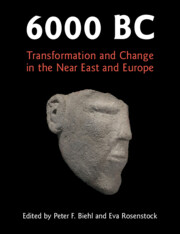Part I - Upper Mesopotamia and Eastern Mediterranean
Published online by Cambridge University Press: 30 April 2022
Summary

- Type
- Chapter
- Information
- 6000 BCTransformation and Change in the Near East and Europe, pp. 15 - 80Publisher: Cambridge University PressPrint publication year: 2022



